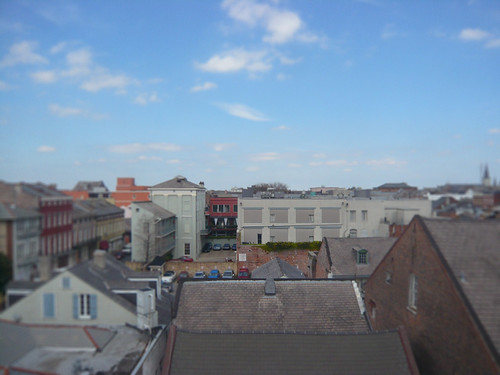Honeycomb Apartments
Izola, Slovenia
2006
Ofis Arhitekti


 About Honeycomb Apartments
About Honeycomb Apartments• Located on the coast of Izola, Slovenia. This seaside structure appeals to young, small families and couples.
• There was increased need for small, affordable housing for these young families.
• Constructed for low-income residency.
• The concept of a rhythmic beehive was an attempt to foster community by paralleling the drive of worker bees in the hive, but was unsuccessful.
• The Honeycomb Housing Complex brings together people of similar backgrounds, and social and economic standing in one building, but gives them no reason to interact or form a community.
• The staggered elevations of the balconies is successful for creating private space between neighbors.
Slovenia's Past Housing Challenges• By end of 1980s housing inefficient
• Home ownership based on favorable credit
• Home ownership in urban areas were not affordable, over priced for most people
• Rental units affordable, but scarce
• cost to construct & maintenance was higher than the rental cost
• housing shortages underestimated
Maritime Youth House
Copenhagen, Denmark
2004
Bjarke Ingels Group


 About Maritime Youth House
About Maritime Youth House• Scandinavian architecture has been one that increases its program for years. The architects continually try to combine many public places into one functional whole.
• This architecture focuses on form and functionality, and inspiration.
• The Maritime Youth House was a special challenge because it was essential that the space focused on two clients: a sailing club and a Children’s center.
• Some important programming issues were giving the children enough safe space to play and also allowing mooring space for the boats.
• Another issue was the site. The site of the construction was riddled with polluted topsoil, which the architects ingeniously decided to build over.
• The architects decided to build a large, elevated wooden deck over the contaminated land, allowing a sprawling space for the children to play and openings underneath for the boats to moor.
• The gently sloping deck fosters community by allowing a great space for the children and center supervisors to interact.
• Indirectly, the space allows sailing club members to interact with the Youth House as well by keeping them connected.
• The fascinating deck serves as the focal point of the project. It is unexpected, inviting, and draws many people to come enjoy the space together.
Citations
Mandic, S., & Rop, T. New housing challenges in Slovenia
Cities, Volume 10, Issue 3, August 1993, Pages 237-245
http://libproxy.uncg.edu:2100/science?_ob=ArticleListURL&_method=list&_ArticleListID=1194305163&_sort=d&_st=1&_acct=C000033084&_version=1&_urlVersion=0&_userid=628623&md5=1d564b65dd568f26608ac2f6a34e08ee
Paulsson, Thoman. Scandinavian Architecture. 1st. Bristol, England: Western Printing Services Ltd., 1959. 239-244. Print.
Lobodzinska, Barbara. Family, Women, and Employment In Central-Eastern Europe. 1st. Westport, CT: Greenwood Press, 1995. 230-231. Print.












